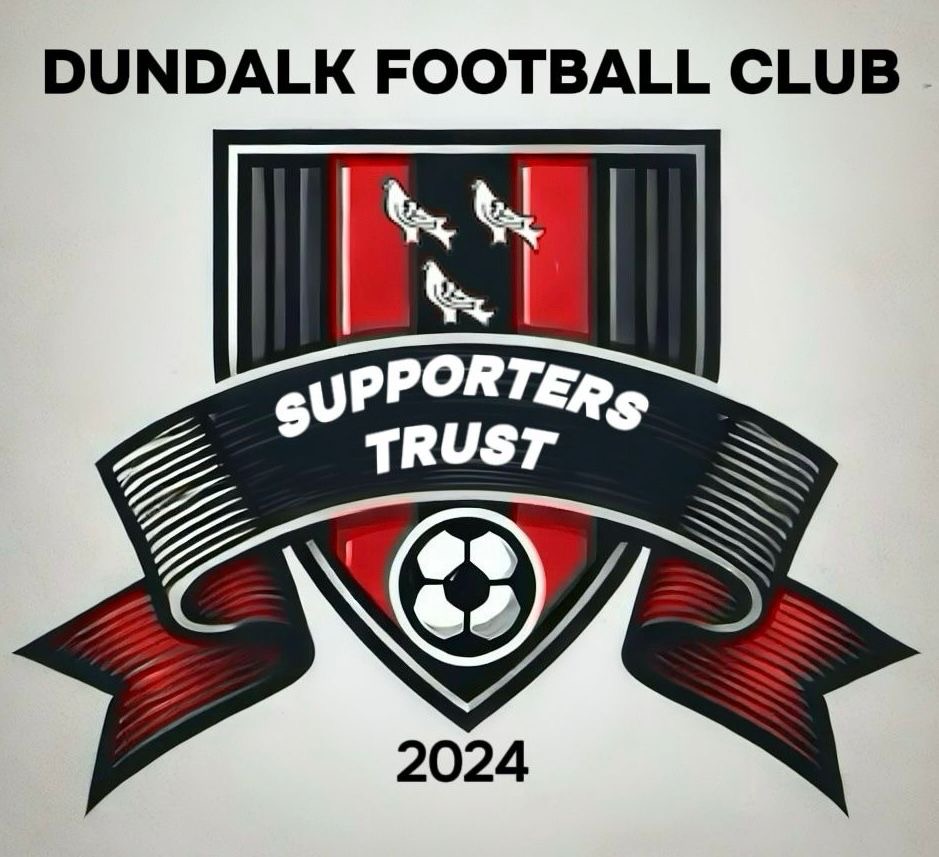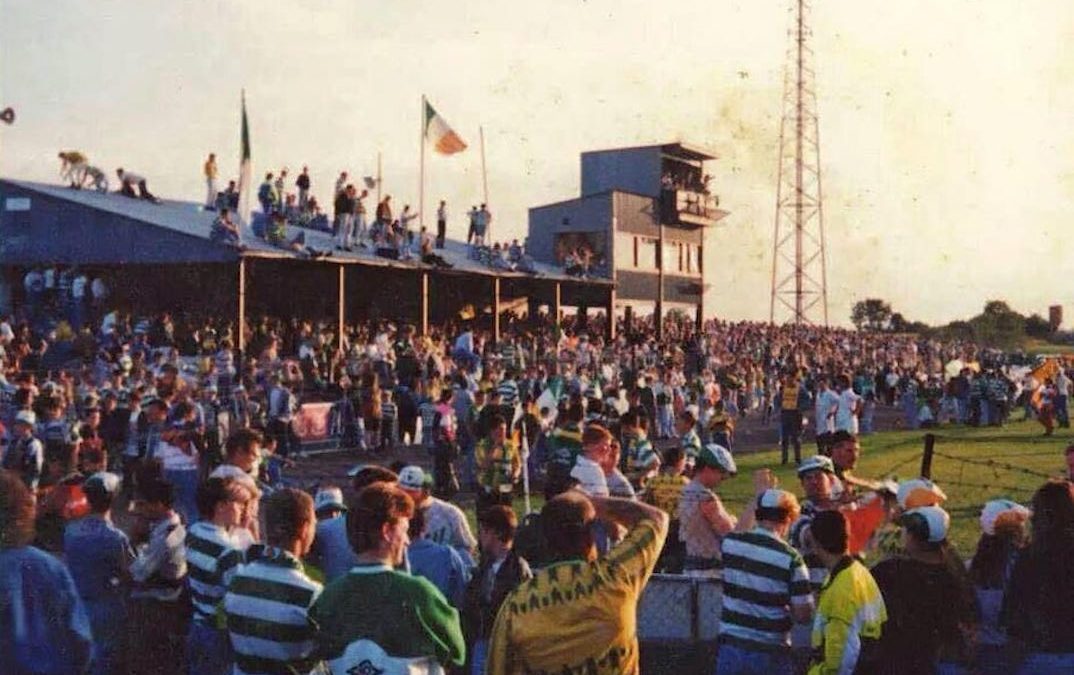‘Towering Glowing Witnesses to Decades of History’
I was in the wooden stand behind the town end goal. I remember you could get underneath the seats and play hide and seek there but by 18 February 1979 I was 11 and I was sitting in it watching Paddy Dunning dive to head home a glorious goal that effectively won the league against Billy Young’s fine Bohemians side. They were the goals with the skinny post and stauncheons then, at the end of a grass pitch with a track around it that used to host stock car racing.
It wasn’t any old grass pitch either. It was Mickey Fox’s pride and joy and was one of the best and biggest in the country. It was as flat as a snooker table. It was used to host FAI Cup semi finals in the times when neutral grounds were rightly used. We were usually playing in the other semi somewhere else. It was favoured by Jack Charlton as Ireland’s training base when our national team used to be housed out the road in the Nuremore Hotel.
The Shedside Army may be surprised to know that their name comes from an actual shed. It was a big, deep shed with an open front and a corrugated iron roof, standing only, no seats with low blocks on one side. The shed side of the ground could accommodate thousands on its slightly raised banks. For big European games benches situated on top of blocks would be placed on the track around the touchline to provide more seating. Health and Safety wasn’t what it is now but I don’t remember any accidents.
It is often remarked that the lights are the same since they were installed in the 1960’s but the reality is the lights themselves have been replaced many times. Some consider the pylons that house them old fashioned. I consider them iconic, towering glowing witnesses to decades of history.
We used to host our European games too. Not just the smaller ones followed by moves to Dublin for bigger clubs. We hosted them all. We hosted Celtic in the European Cup last 16, a star studded Spurs team, a superb Liverpool team, FC Porto, PSV Eindhoven and others in the old ground — not to mention Linfield and Rangers. I was sitting on top of the wall at the town end when Mick Fairclough equalised against Spurs. I fell off the wall. Cockneys around me enjoyed that. Not a scent of trouble, The old wooden stand was gone by then and has never been replaced.
I was never really one for the stand. Each to their own. In fact I’ve watched more reserve games from the stand than first team games. The reserves used to play in a reserve league on Saturday afternoons at a time when we had winter football and league matches were played on Sunday afternoons. As a kid we’d often go to watch the reserves and get in to the stand for free. Oh, I nearly forgot, the turnstiles used to work. It’s possibly as much a symbol of our decay as any other. There were men in there taking entrance money, the stiles ‘clicked’ and when I was young enough I was lifted over, I even think I got in under sometimes
I’m struggling to remember improvements. Look at this photograph. It’s a 1991 friendly against Celtic. The old shed has a commentary and TV box added to it. The commentary box used to be a blue box in front of the main stand before that. If you look closely you can see the track around the pitch, the youngsters standing on the blocks at one end of the shed. You can see the depth of the shed and its corrugated roof, bedecked with Celtic fans on this occasion enjoying the slope. Those pylons bearing witness.
Oriel Park has changed and has indeed gone backwards, but it’s still there. And someday we, we who remember, we who want to pass something on, must grasp the nettle and deliver a proper home once again. A home fit for our town, a home fit for Europe
Brendan Ogle

